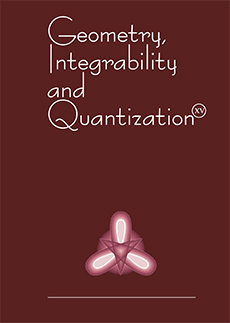Abstract
This paper is a review of the classical Möbius-Lie geometry and recent works on its extension. The latter considers ensembles of cycles (qua\-drics), which are interconnected through conformal-invariant geometric relations (e.g. ``to be orthogonal'', ``to be tangent'', etc.), as new objects in an extended Möbius-Lie geometry. It is shown on examples, that such ensembles of cycles naturally parameterise many other conformally-invariant families of objects, two examples--the Poincar\'e extension and continued fractions are considered in detail. Further examples, e.g. loxodromes, wave fronts and integrable systems, are discussed elsewhere. The extended Möbius--Lie geometry is efficient due to a method, which reduces a collection of conformally in\-vari\-ant geometric relations to a system of linear equations, which may be accompanied by one fixed quadratic relation. The algorithmic nature of the method allows to implement it as a
Information
Digital Object Identifier: 10.7546/giq-20-2019-13-61


